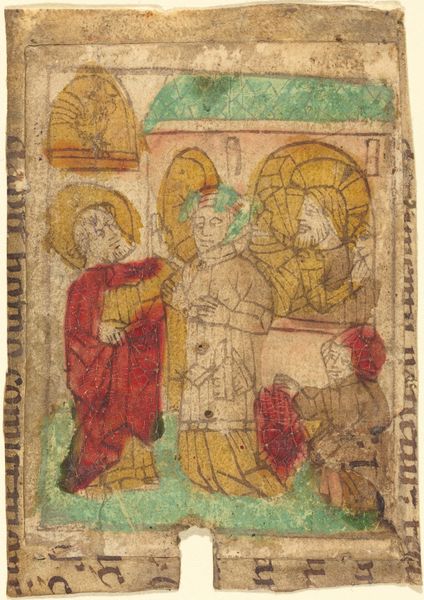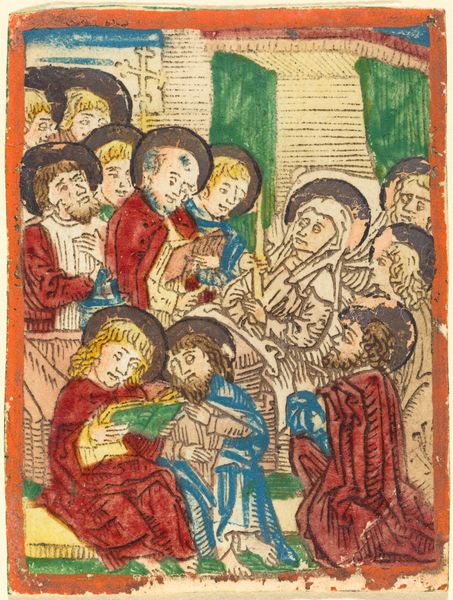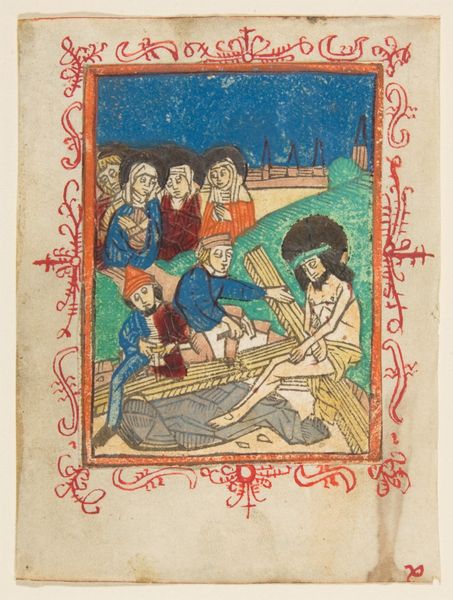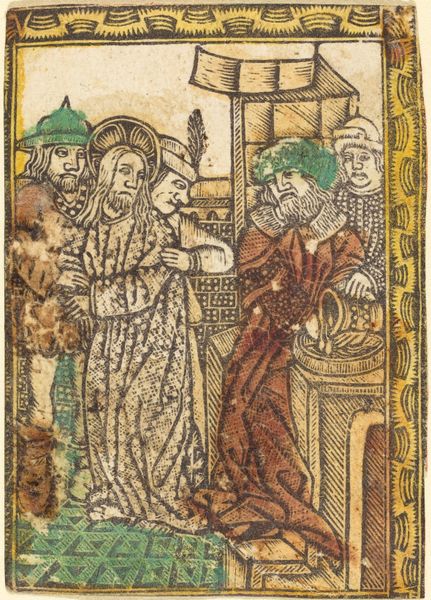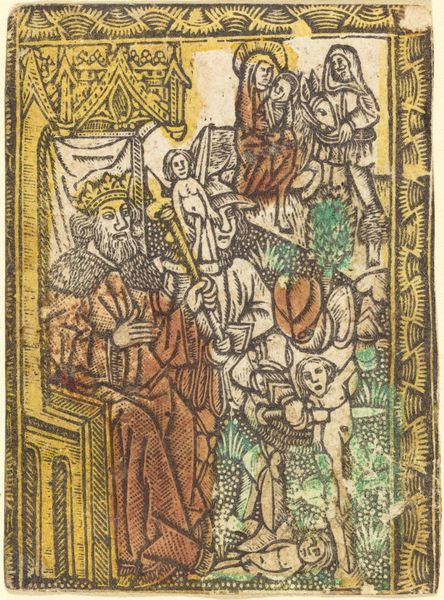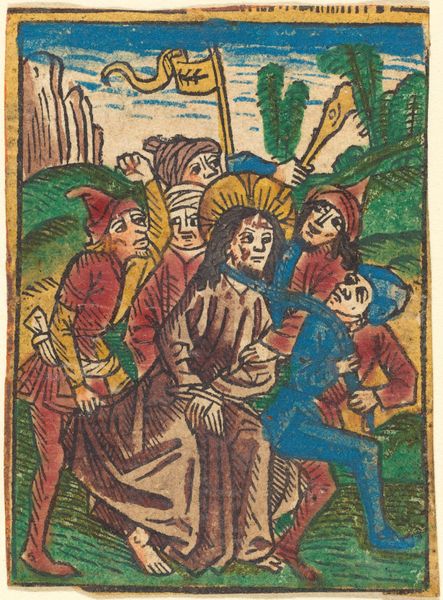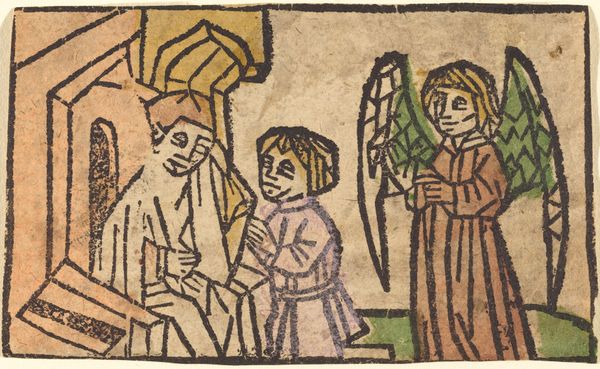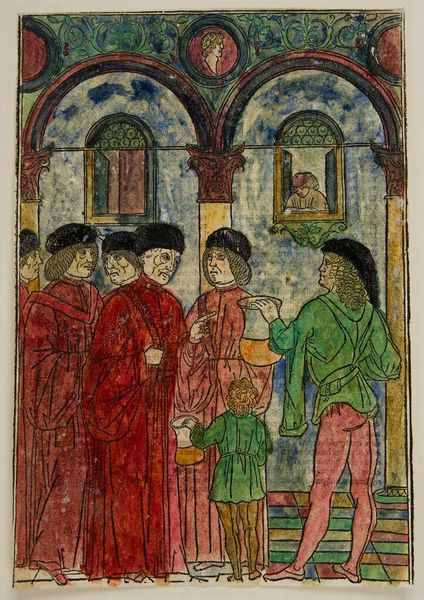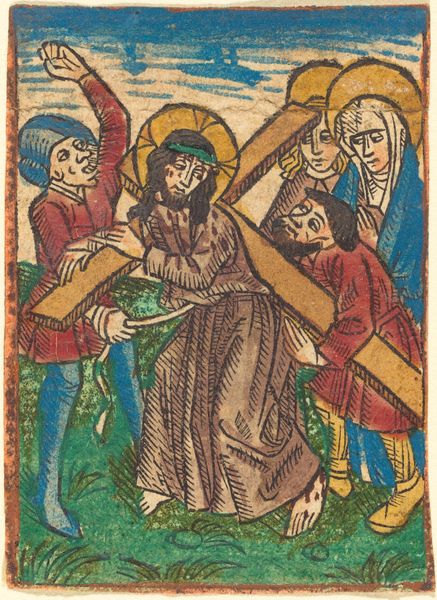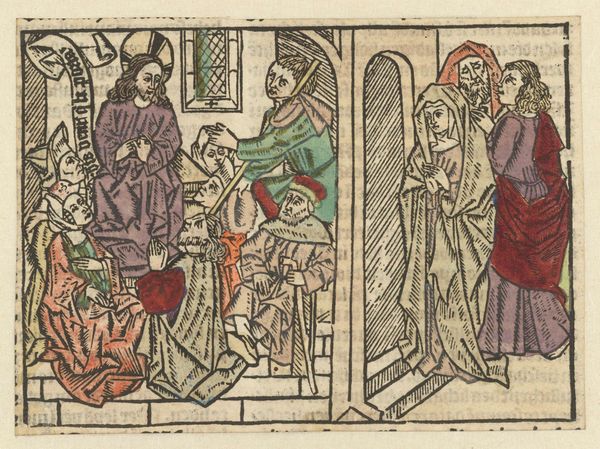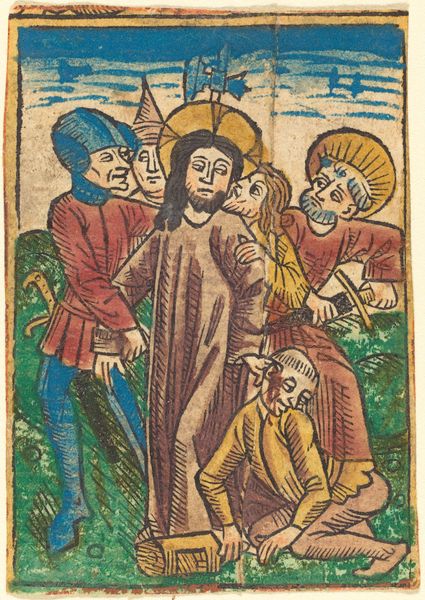
Moses Receiving the Law, illustration from a Biblia Pauperum blockbook, 4th edition 1460 - 1470
0:00
0:00
drawing, print, ink, woodcut
#
drawing
#
medieval
# print
#
ink
#
coloured pencil
#
woodcut
#
northern-renaissance
Dimensions: Sheet: 5 3/8 × 2 5/8 in. (13.6 × 6.6 cm)
Copyright: Public Domain
Curator: Here we have an illustration entitled "Moses Receiving the Law," dating back to the mid-15th century. It's from a Biblia Pauperum blockbook, specifically the fourth edition. Editor: It strikes me as remarkably direct. The color palette, especially the subdued reds and greens, evoke a somber mood, while the compact composition—the figures stacked almost on top of each other—adds to a feeling of intense focus. Curator: It's fascinating to view this piece through the lens of social dynamics and power. Blockbooks like this one made biblical narratives accessible to a wider, often illiterate audience, subtly shaping their understanding of religious law and societal order. Consider how the depiction of Moses receiving the tablets from God reinforces a divinely sanctioned patriarchal structure. Editor: Absolutely. And visually, that handing down of the tablets—a symbol of authority, clearly delineated with lines—emphasizes hierarchy. Note how the halo is placed so that our attention goes immediately there and then straight to Moses, making his place unquestionable. What's fascinating is how this simple, direct imagery becomes encoded over time with layer after layer of cultural meaning. Curator: Precisely. By using the Bible as a tool, people in power used artwork like this to reinforce the cultural idea that order and power are sacred and originate from God, which became the cornerstone for law. Editor: You're right. Even the expressions of those below Moses, slightly upturned, capture reverence but also some unease—a visual tension between divine command and human response. Curator: Thinking of the socio-political context reminds us how visual rhetoric was not neutral, it worked to negotiate particular relationships between rulers and subjects. Editor: Looking at this piece has reconfirmed my understanding of just how durable symbols can be and just how much history lives within them. Curator: For me, analyzing it is another confirmation of art's impact on law and its role in constructing what we call justice.
Comments
No comments
Be the first to comment and join the conversation on the ultimate creative platform.

